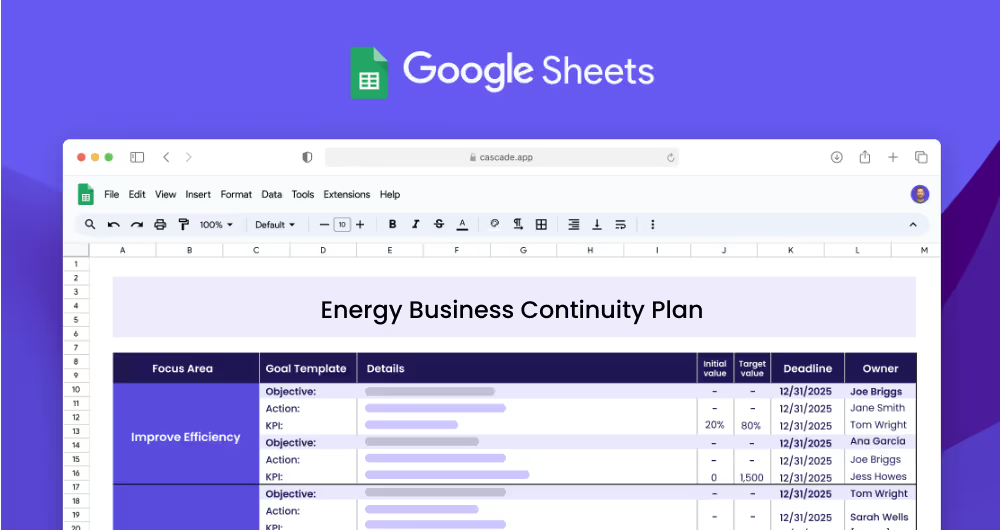An energy business continuity plan is a strategy that enables energy companies, utilities, and other organizations in the energy sector to maintain a reliable flow of energy during unexpected events or crises. The plan outlines a set of processes and procedures that enable these organizations to quickly and efficiently respond to any disruption in energy supply. The goal of the plan is to ensure that energy companies are able to continue providing services to their customers, even in the event of an emergency.
Each focus area has its own objectives, projects, and KPIs to ensure that the strategy is comprehensive and effective.
This energy business continuity plan template is designed for energy companies, utilities, and organizations in the energy sector who want to create an effective plan to address the resilience of their energy infrastructure, supply chains, and services during crises or unexpected events. The template will help these organizations identify potential risks and develop strategies for mitigating them.
A focus area refers to the areas that the energy business continuity plan should address. Examples of focus areas could include strengthening energy infrastructure, improving cyber security, increasing backup power capacity, and streamlining business processes. Each focus area should have a set of objectives, actions, and measurable targets (KPIs) to help organizations achieve their desired outcomes.
Objectives are the goals that should be achieved within each focus area. For example, under the focus area of Strengthening Energy Infrastructure, objectives could include improving supply chain resilience and increasing backup power capacity.
KPIs, or key performance indicators, are measurable targets that can be used to track the progress of each objective. Examples of KPIs for the objective of increasing backup power capacity could include increasing the inventory of critical components and enhancing power backup systems.
Projects are the actions that need to be completed in order to achieve each KPI. For example, to achieve the KPI of increasing the inventory of critical components, an organization may need to implement an inventory control system or increase the number of suppliers.
If you’re ready to accelerate your strategy and see quicker results, Cascade Strategy Execution Software is your next step. Unlike manual spreadsheets that can bog down your progress, Cascade offers a dynamic platform that enhances real-time updates, centralized collaboration, and automated reporting. This means your team can easily track progress, adjust strategies quickly, and maintain alignment across all levels. Sign-up for free or book a demo with one of our strategy experts to explore how we can help you streamline and succeed.


